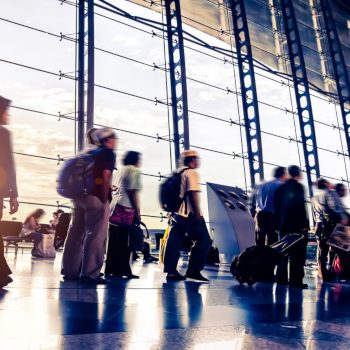Top-Flight Experience At The Centre Of Heathrow’s Strategy
Heathrow is one of the busiest airports in the world, ushering 38.1 million passengers through its doors in the first half of 2018 alone. While this volume of traffic provides a huge mine of potential customer data, it isn’t always easy to gather because a significant proportion of passengers don’t book any services through the airport directly.
As analytics and optimisation lead for this global travel hub, Stuart Irvine is tasked with tracking and utilising as much of this information as possible. He told CMO.com how Heathrow is using everything from reward programmes to augmented reality to create maximum engagement with the airport’s transient audience.
CMO.com: Can you take me through your role and responsibilities? Irvine: I’ve been here for eight years and was really brought in to implement our analytics and optimisation operations and drive progress through lots of different areas. We have eight consumer-facing websites, so there’s a lot to analyse. I was a digital manager for three years, so heavily involved in paid search display and all of our acquisition work. Really, though, analytics has been at my core for more than 15 years in various companies.
CMO.com: How do you try to excite your customers to create engagement?
Irvine: I think it’s all about the experience at the airport. We have some great examples of how we’ve been able to engage passengers with some of our augmented reality apps, some of them specifically aimed at children. We have our very own Mr. Man app at Heathrow Airport, Mr. Adventure. And I’m pleased to say that he was joined by Little Miss Adventure last year. They’re great fun and allow people to enjoy interactive games throughout the terminal, as well as have their picture taken with Mr. Adventure and Little Miss Explorer.
Also, personalisation and getting to know our customers are huge areas for us. We are targeted with engaging 80% of our customers digitally during their trip, and another challenge is to recognise 50% of those customers. That is a very high benchmark.
CMO.com: You mentioned augmented reality (AR). How significant do you think the tech could be for customer experiences at Heathrow?
Irvine: In the future I think there could be a lot of opportunity to improve customer experience through AR. We already have Bluedot [geolocation] technology so that passengers’ routes to their gates will be prescribed. You can follow a blue arrow all the way there, and it will tell you how long it will take to reach the gate, plus how many feet you have left to walk.
Also, we’re able to overlay images of offers to preorder food and beverages. Another exciting thing we can do is supplement signs within the airport with translated overlays. I think those are some of the areas where customer experience will improve dramatically over the next few years.
CMO.com: Do you think customers are comfortable offering the kind of data required for personalisation?
Irvine: People are happy to give up some data if they know it’s going to drive more relevant offers, or it’s going to boost their experience in the airport. It’s that fundamental value exchange that is key. I think that’s certainly something that we can see coming in the future with Millennials. That group is much more open with their data if they can see that exchange happening. It’s not just the case with that age group either; it’s across all generations now. Lots of our older travellers are happy for their data to be used if they can see the value it offers and see that it opens them up to relevant, personalised experiences.
I think our data is in a good place. We now have all the tools to deliver on that personalisation. I think content velocity is one issue that we will be facing over the next year or two. Having a central repository for our assets, for all of our campaign collateral, allows us to not only deliver efficiencies in our marketing processes, but to make sure that we have the right content to serve at the right time.
CMO.com: How do you engage with customers when they’re not on-site?
Irvine: We send over 6 million emails every month. We have a big database of rewards and loyalty members who are absolutely key to our growth and the experiences we create. An average rewards member will probably visit at least five times a year, spending an average of more than £140 [US$182] per visit. If you compare that to our average retail spend per passenger, which is between £5 and £8, you can see the huge difference between those really engaged customers and the people just passing through.
CMO.com: How effective do you think Heathrow is at tracking engagement with the brand online?
Irvine: I’ve always said our analytics data set at Heathrow is one of the most important data sets in the business. It’s taken me a few years to get recognition around the business about the importance of that online data. We’ve been doing reserve and collect for five years, which is now going to move through to the Heathrow Boutique site, one of our newest redevelopments. It’s a transactional e-commerce marketplace working with over 300 retailers. If someone is on the Heathrow Boutique site and they’re browsing handbags or technology, those signals will flow through the data processes and be stored as traits in our campaign management software. That allows us to then reactivate if someone is visiting Heathrow.com, so we’ll know the products, services, and categories that we need to promote to them.

